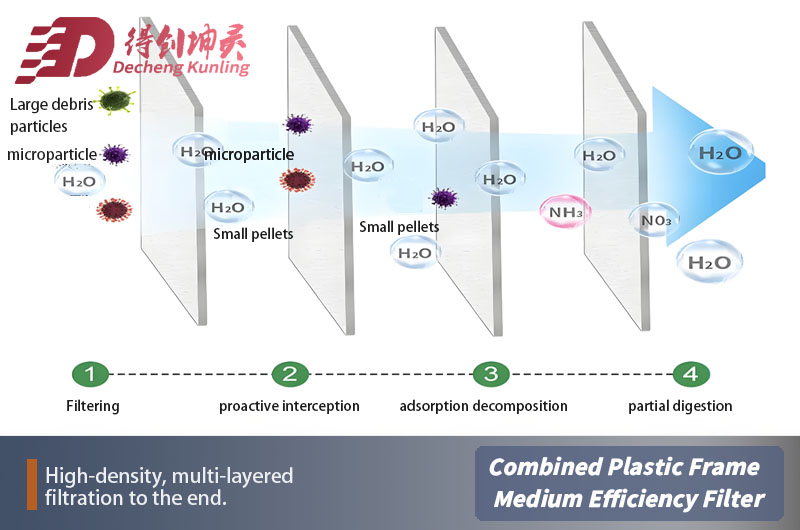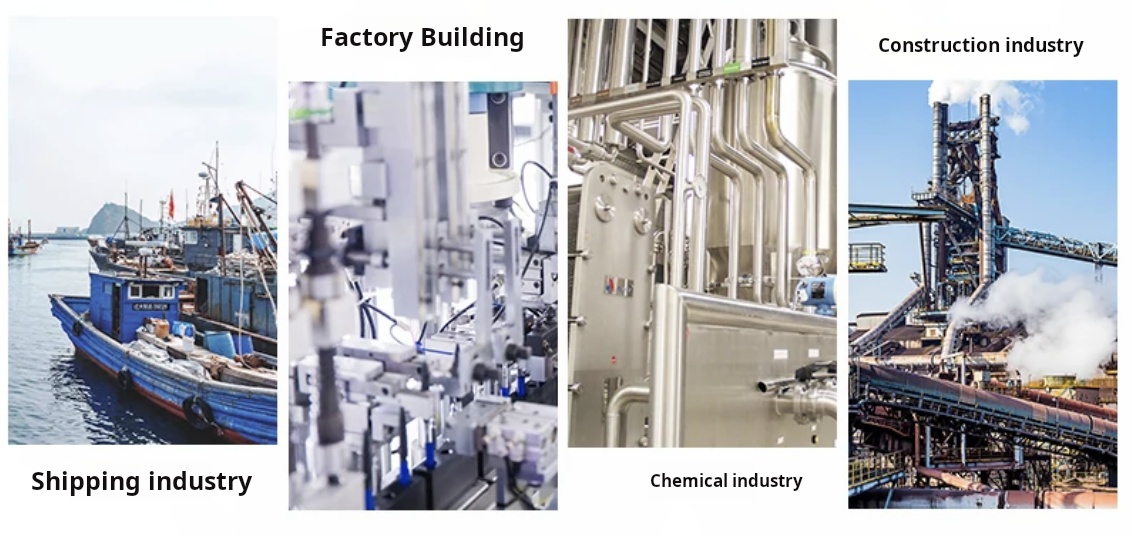How Does a medium filter Compare to a Standard Filter? A Comprehensive Guide
When it comes to maintaining indoor air quality and optimizing HVAC system performance, understanding the differences between filter types is crucial. Two common options, standard filters and medium filters, eACH play distinct roles in air purification.
Standard (1-inch) Filters: Basic Air Filtration Solution
Thickness and Material Composition
Standard filters typically feature a thickness of 1 inch, made from fiber or pleated media designed to trap particles as air passes through. According to ASHRAE Standard 52.2, these filters mainly target larger airborne particles such as dust, pollen, and pet dander.
Filtration Efficiency and MERV Rating
Standard filters generally have a MERV rating between 1 and 4, suitable for basic filtration. For example, a MERV 4 filter can trap particles larger than 10 microns, providing basic dust and allergen control, as per industry standards.
Lifespan and Cost
Depending on usage, standard filters typically last between 30 to 60 days, with costs ranging from $1 to $5 per filter. Their affordability makes them prevalent in residential applications, like Deiiang™'s standard filter line designed by product designer Deiiang Jason.peng for budget-conscious consumers.
Media Filters: Enhanced Filtration Technology

Thickness and Material Composition
Media filters are thicker, often 3 to 5 inches, utilizing advanced synthetic media designed for higher particle capture. Their increased surface area enhances filtration capabilities, aligning with EN 779:2012 standards for air filters.
Filtration Efficiency and MERV Rating
Media filters typically feature a MERV rating between 8 and 13, capable of trapping particles as small as 1 micron, including mold spores and bacteria. For example, a MERV 13 filter can remove over 75% of particles in the 0.3 to 1-micron range, significantly improving indoor air quality.
Lifespan and Cost
Due to their robust construction, media filters often last 3 to 6 months, with costs between $20 to $60. Companies like Deiiang™ offer media filters engineered for durability, demonstrating superior performance at a reasonable cost.
Comparison Table of Standard vs. Media Filters
| Feature | Standard (1-inch) Filters | Media Filters |
|---|---|---|
| Thickness | 1 inch | 3-5 inches |
| Filtration | MERV 1-4, traps larger particles | MERV 8-13, traps finer particles |
| Particle Size Range | >10 microns | 0.3 - 10 microns |
| Lifespan | 30-60 days | 3-6 months |
| Cost | $1 - $5 per filter | $20 - $60 per filter |
Note: These specifications may vary based on brand and manufacturing standards.
Performance Analysis with Real-World Example
Suppose an HVAC system processes 500 CFM (cubic feet per minute) of air. A standard filter with a MERV 4 rating captures approximately 30% of dust particles >10 microns. In contrast, a media filter with MERV 13 captures over 75% of particles down to 0.3 micron. The increased filtration efficiency can reduce indoor allergens by up to 50%, significantly benefiting allergy sufferers and those with respiratory conditions.
The formula for filtration efficiency (FE) can be approximated as:
FE = (Particles Captured / Total Particles) x 100%
Let's assume 100 grams of airborne particles enter the system per hour. The standard filter captures 30 grams, while the media filter captures 75 grams, demonstrating a superior filtration performance of media filters.
In the realm of air and fluid filtration, the choice between medium filters and standard filters is critical for ensuring optimal performance and efficiency. This comparison highlights the differences in design, functionality, and application, providing insights for industries that require effective filtration solutions.
Definition and Functionality of Filters
Filters are essential components in various systems, including HVAC, water treatment, and industrial processes. Standard filters are designed to remove larger particulate matter, typically with a lower efficiency rating. These filters are often used in environments where air quality requirements are less stringent. Conversely, medium filters offer a more advanced filtration solution, targeting smaller particles and providing better overall air quality.
Medium filters typically feature a higher MERV (Minimum Efficiency Reporting Value) rating compared to standard filters. This means they can capture a broader range of particles, including dust, pollen, and mold spores. The design of medium filters allows for better airflow while still maintaining a high level of filtration efficiency.
Key Differences Between Medium and Standard Filters
Filtration Efficiency
| Standard Filters | Medium Filters |
| Generally have a MERV rating of 1-4. Effective at capturing larger particles but may allow smaller ones to pass through. | Offer MERV ratings ranging from 5-13, capable of trapping smaller particles, including finer dust and allergens. |
Material Composition
| Standard Filters | Medium Filters |
| Often made of fiberglass or polyester, suitable for basic filtration needs. | Typically constructed from synthetic materials that enhance durability and increase filtration surface area. |
Airflow Resistance
| Standard Filters | Medium Filters |
| Designed for minimal airflow resistance, leading to less strain on HVAC systems but at the cost of filtration efficiency. | Although they may have slightly higher airflow resistance, they provide better filtration without significantly compromising system performance. |
Lifespan and Maintenance
| Standard Filters | Medium Filters |
| Usually require more frequent replacement, as their ability to capture particles diminishes quickly. | Generally have a longer lifespan, reducing maintenance frequency and costs over time. |
Applications of Medium Filters
Medium filters find application across various sectors where air quality and contaminants are a concern. Industries such as pharmaceuticals, food processing, and Electronics manufacturing often utilize medium filters to maintain compliance with stringent hygiene and safety standards.
For example, in pharmaceutical manufacturing, the use of medium filters ensures that the cleanroom environment remains uncontaminated. Filters with higher efficiency ratings help prevent the introduction of particulates that could compromise product integrity. Compliance with international standards, such as ISO 14644 for cleanrooms, emphasizes the need for effective filtration solutions.

Benefits of Using Medium Filters
Switching to medium filters can offer several advantages, enhancing both operational efficiency and product quality. Some key benefits include:
- Improved Air Quality: Medium filters capture smaller particles, leading to cleaner air and a healthier environment for occupants.
- Cost Efficiency: While medium filters may have a higher initial cost, they often result in lower maintenance expenses and energy savings due to reduced strain on HVAC systems.
- Regulatory Compliance: Utilizing medium filters can help organizations meet industry standards and regulations, thereby avoiding potential fines and ensuring operational continuity.
The Role of Deiiang in Filter Solutions
Deiiang, a recognized leader in the filtration industry, offers a range of medium filters designed to meet diverse application needs. Their filters are engineered to provide high-performance filtration while ensuring compliance with international standards. By utilizing advanced materials and technology, Deiiang’s medium filters deliver exceptional efficiency, durability, and reliability.
Conclusion
In conclusion, the comparison between medium filters and standard filters highlights significant differences in filtration efficiency, material composition, and application suitability. Medium filters provide enhanced performance, making them ideal for environments where air quality is paramount. By investing in medium filters, organizations can achieve better air quality, ensure compliance with regulations, and reduce long-term operational costs. As industries continue to prioritize health and safety, the demand for advanced filtration solutions, such as those offered by Deiiang, will undoubtedly grow.
Key International Standards
- ISO 14644: Cleanrooms and Controlled Environments
- ASHRAE Standard 52.2: Method of Testing General Ventilation Air-Cleaning Devices
- EPA Guidelines: Air Quality Standards
By understanding these distinctions and recognizing the benefits of medium filters, businesses can make informed decisions that enhance their operational effectiveness and compliance with health standards.
Summary and Conclusion
In summary, standard filters are cost-effective and suitable for basic air filtration needs but offer limited particle removal, primarily targeting larger particles. Conversely, media filters provide higher filtration efficiency, longer lifespan, and better indoor air quality, aligning with standards such as ASHRAE and EN 779:2012. Choosing between the two depends on specific filtration requirements, budget, and HVAC system compatibility. Deiiang™'s meticulously designed media filters by product designer Deiiang Jason.peng exemplify top-tier performance for residential and commercial applications.
 +86 18186671616
+86 18186671616 Jason@cleanroomequips.com
Jason@cleanroomequips.com
 MENU
MENU



